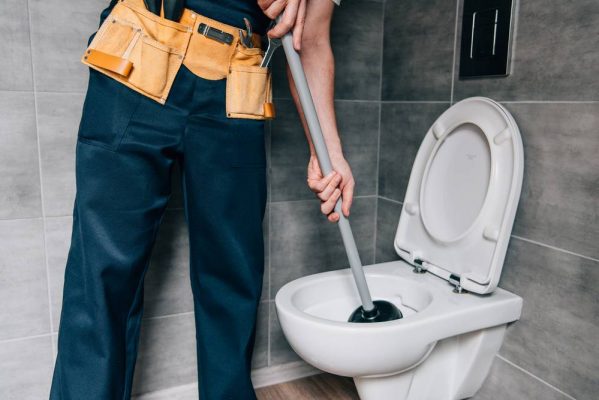We've encountered this article relating to A Guide to Plungers (and How to Use Them) directly below on the internet and figured it made good sense to relate it with you in this article.

Intro
Correct maintenance of family drains pipes is essential for preventing clogs and guaranteeing smooth water flow. One of the secret devices in every home owner's toolkit is the bettor, along with different drain cleaners designed to tackle persistent obstructions successfully. This write-up explores exactly how to use plungers and drain cleansers properly to maintain your drains moving openly.
Area 1: Understanding Plungers
Types of Plungers
There are a number of sorts of bettors offered, each made for different kinds of drains and obstructs. One of the most typical kinds include mug plungers, flange bettors, and accordion plungers.
Exactly How Plungers Work
Bettors deal with the concept of producing stress and suction to dislodge clogs. When properly applied over a drainpipe, they produce a vacuum cleaner that can pull out debris or separate obstructions.
Selecting the Right Bettor
Selecting the ideal bettor depends upon the type of drainpipe and the nature of the obstruction. Mug plungers are optimal for sinks and bathtubs, while flange bettors are much better suited for bathrooms as a result of their layout.
Typical Mistakes with Bettors
Preventing these errors guarantees effective plunging: improper seal around the drainpipe, insufficient pressure, and unclear bordering debris.
Area 2: Utilizing Plungers Properly
Preparation
Prior to diving, guarantee the plunger covers the drainpipe completely and forms a limited seal. Clear any kind of noticeable particles around the drain opening.
Technique
Begin with mild plunging movements to construct suction. Increase pressure progressively, utilizing a consistent rhythm. Repeat as essential up until the drainpipe clears.
Repairing Tips
If diving doesn't work, try readjusting the seal, using petroleum jelly for a better seal, or utilizing a various type of plunger.
Area 3: Recognizing Drain Cleaners
Kinds Of Drainpipe Cleaners
Drain pipes cleaners can be chemical or enzymatic. Chemical cleansers use strong chemicals to dissolve blockages, while enzymatic cleaners use natural enzymes to break down raw material.
How Drainpipe Cleaners Work
Chemical cleaners respond with clogs to dissolve them, while chemical cleaners break down natural materials like hair and grease without hurting pipelines.
Safety Factors to consider
Always wear handwear covers and eye defense when utilizing chemical drain cleansers. Make sure ample air flow and adhere to producer directions carefully.
Eco-Friendly Alternatives
Consider using vinegar and baking soft drink or enzyme-based cleansers for environmentally friendly alternatives that are safer for pipelines and the setting.
Area 4: Using Drainpipe Cleaners Successfully
Application Strategies
Put chemical cleansers directly right into the drainpipe opening. Enable them to benefit the suggested time before flushing with warm water. Chemical cleansers need to sit over night.
Preventative measures
Avoid mixing different types of cleansers, as this can produce poisonous fumes. Never ever use chemical cleansers in conjunction with a bettor, as spilling can take place.
Dealing With Persistent Clogs
For relentless clogs, think about using a plumbing snake or calling a specialist plumbing technician to stop damage to pipelines.
Final thought
Finally, comprehending how to make use of bettors and drainpipe cleansers successfully is crucial for keeping healthy and balanced pipes systems. By selecting the right tools and methods, home owners can tackle small clogs and stop major plumbing problems down the line.
How to Use a Plunger to Unclog a Drain
The humble plunger is a simple yet effective tool for breaking clogs in sinks, tubs and toilets. This handy tool is easy to use. You can make the most of its power if you understand how it works. Ready to dive in? Here’s what you need to know.
Safety First!
Never use a plunger with drain chemicals. Water will splash as you work, and the chemicals can spatter, burning skin and eyes. It’s a good idea to use rubber gloves and wear safety goggles when you work on a clog.
Choose the Right Tool for the Job
Plungers come in two different styles. Sinks, bathtubs and showers require a cup plunger. Like its name suggests, the rubber end is shaped like a cup. Use a flange plunger on toilets. These plungers have a rubber funnel extending from the cup. A plunger needs to be big enough to cover the drain.
Ready, Set, Plunge!
- Coat the rim: Coat the plunger rim with petroleum jelly. This helps make a better seal.
- Block outlets: Hold a wet rag over nearby outlets such as the overflow vent or the drain in a second sink.
- Release air: Insert the plunger at an angle into the water. Water will displace air in the cup. A water-filled cup is more forceful than one filled with air.
- Keep the plunger upright: Hold the plunger perpendicular to the drain. Use fast, forceful strokes, but make the first stroke gentle. The first stroke can create a splash if the cup still contains air. Thrust the plunger 15 to 20 times.
- Snap off the plunger: The final stroke should be a strong upward motion that ends when the plunger snaps off the drain.
- Repeat the process: you may need to repeat this sequence several times. When the water drains away, your work is done. High-five!
https://plumbernw.com/blog/how-to-use-a-plunger-to-unclog-a-drain/

Hopefully you enjoyed reading our post about . Thanks a lot for taking a few minutes to browse our posting. Do you know about anybody else who is truly interested in How To Use Your Toilet Plunger Correctly in 5 Easy Steps? Feel free to promote it. I recognize the value of your readership.
Book A Service Call
Comments on “Ways to Successfully Apply Plungers and Drain Cleaners: Expert Guide”